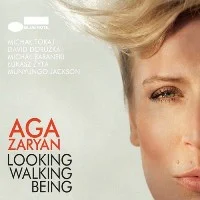Year: 1963
File: MP3@320K/s
Time: 26:00
Size: 68,4 MB
Art: Front
(2:22) 1. It's My Party
(2:15) 2. Cry Me a River
(2:07) 3. Cry
(2:15) 4. Just Let Me Cry
(2:01) 5. Cry and You Cry Alone
(2:23) 6. No More Tears
(2:11) 7. Judy's Turn to Cry
(1:53) 8. I Understand
(2:24) 9. I Would
(2:19) 10. Misty
(1:46) 11. What Kind of Fool Am I
(2:00) 12. The Party's Over
Lesley Gore's debut album was rushed out on the heels of her debut smash, "It's My Party," and suffered from being made into a contrived concept album of sorts. Most of the songs were about -- as the title indicated crying, since the key hook of "It's My Party" had Gore boasting that she could cry if she wanted to. The effect, if only temporarily, was to make her out to be something of a novelty artist, even if one of the songs other than "It's My Party" (its inferior follow-up, "Judy's Turn to Cry") turned out be a big hit as well. Aside from the limited lyrical themes, a bigger problem was that the material, other than the two big hits, largely veered between tame treatments of pop standards ("Misty," "Cry Me a River," "What Kind of Fool Am I") and unmemorable soppy pop ballads by contemporary writers that tapped into the weaker aspects of doo wop-influenced girl group music.
this point, Gore seemed to be as interested in being an adult torch singer as a teen rocker, but her teenaged pipes were simply far more suited toward girl group-style songs than trying to be another Julie London. The big flaw is one that seems obvious in retrospect, but probably wasn't even seen by many who were helping to direct her career at the time: Aside from the hits, nothing here rocked respectably, or swung as Quincy Jones' arrangements were capable of doing, though "Cry Me a River" wasn't too bad. Gore would, perhaps to the surprise of many, go on to establish a respectable career with a series of hits that didn't always milk the self-pity bucket, though this first effort gave all the indication of her being a one-hit wonder.~ Richie Unterberg https://www.allmusic.com/album/ill-cry-if-i-want-to-mw0000845050
this point, Gore seemed to be as interested in being an adult torch singer as a teen rocker, but her teenaged pipes were simply far more suited toward girl group-style songs than trying to be another Julie London. The big flaw is one that seems obvious in retrospect, but probably wasn't even seen by many who were helping to direct her career at the time: Aside from the hits, nothing here rocked respectably, or swung as Quincy Jones' arrangements were capable of doing, though "Cry Me a River" wasn't too bad. Gore would, perhaps to the surprise of many, go on to establish a respectable career with a series of hits that didn't always milk the self-pity bucket, though this first effort gave all the indication of her being a one-hit wonder.~ Richie Unterberg https://www.allmusic.com/album/ill-cry-if-i-want-to-mw0000845050
I'll Cry If I Want To




















